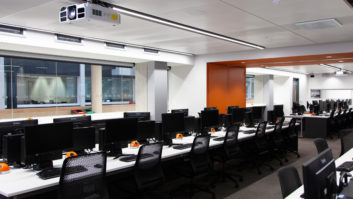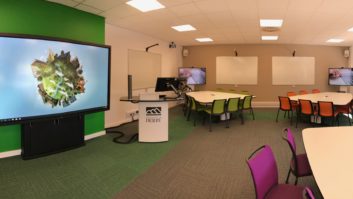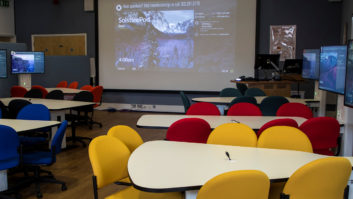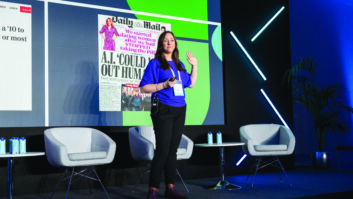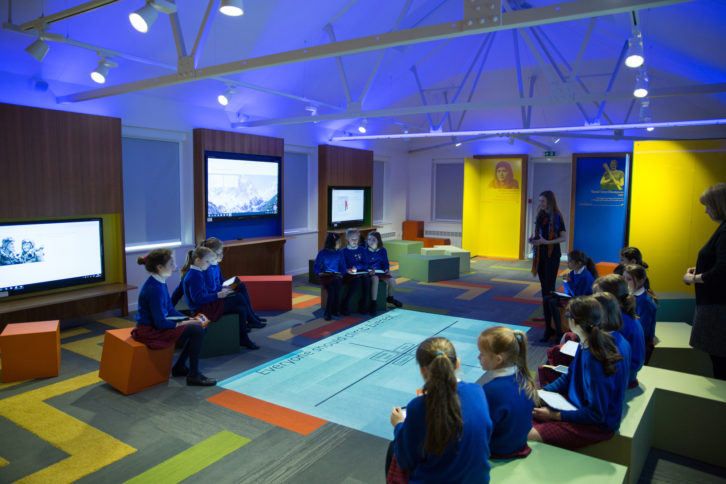
Economic constraints as a result of austerity measures mean that the past five years have been uniquely challenging for many UK primary and secondary schools. To pick just one illustrative example, the Education Policy Institute found that during the 2017-18 period half of all secondary academies and 60% of maintained secondary schools – in other words, those managed by local authorities – ended up spending more than they received, forcing them to draw upon their own reserves.
Despite this challenging context, schools have been obliged to grapple with what is surely the most radical technological transition to take place since the introduction of the interactive whiteboard. More and more, the name of the game is collaboration between students and teachers, with wireless-enabled technologies making it possible for everyone to enjoy plug and learn-style connectivity.
As head of product management at projector and monitor manufacturer BenQ, Chris Goff, remarks: “With the movement from ‘chalk and talk’ to front-of-class interactive presentation growing, teaching styles are becoming more collaborative than ever. Hence there is an increased demand for easy-to-use and reliable wireless connectivity, which is complementary to the recent change in teaching styles.”
State of the market
Among those who spoke to Installation for this article, opinions on the current health of the education market in the UK are the subject of some variation. As far as BenQ is concerned, says Goff, “we’re growing massively year-on-year and we’re seeing a shift in display sizes. In particular, secondary education is up-sizing to 75in and above, while higher education and universities are specifying 75-86in for seminar rooms and laser projection for lecture theatres.”
Peter Curtis, business development manager at UK AV distributor POLAR Audio, observes that in general terms the education market is “growing currently, but I am not sure for how long taking into account the current political factors affecting the UK, such as Brexit.”
John Dykes, business development director at Casio, suggests that an appetite for new technologies is continuing to provide commercial opportunities for vendors. “In light of budget cuts over the last 10 years it would be blinkered to say that the AV market [in education] is growing as rapidly as it was 15 or 20 years ago,” he says. “But despite this, there has been a series of seismic shifts in the way educational institutions are using technology, such as the adoption of cloud computing and bring-your-own-device (BYOD) formats. Therefore, schools are looking for solutions which support these new environments, and it’s these areas which are growing. Previously, this growth has mostly been in HE [higher education] institutions, but over the last few years as the price of technology has come down, schools have started to procure this equipment too.”
Aidan Crowe, group sales manager of AV design and integration company Pure Audio Visual, also alludes to the distinction between primary/secondary and higher education. “Income from tuition fees, overseas students and industry partners mean that the [HE] sector does not experience the same funding constraints found in compulsory education,” says Crowe. “Major funding pressures and a lack of necessary infrastructure make it more difficult for schools and colleges to invest in technology, resulting in a flat market for audiovisual equipment.”
Appetite for collaboration
In those locations where spending on new technology is taking place, there is often a remarkable uniformity about the composition of investments. Given their centrality to modern educational practices, it’s no surprise to discover that interactive and higher-resolution screens, including those supporting 4K, often head schools’ shopping lists. But with the amount of student-generated digital content also rising, many schools are considering investments in digital signage, as well as new entry/sign-in systems that correspond with regulations concerning data protection. Moreover, as awareness of the potential of fully integrated, IP-based infrastructures improves, schools are increasingly seeking solutions that will be able to sit satisfactorily on the same centralised network.
“Collaborative products seem to be [a prominent current trend], as do AV-IP solutions,” says Curtis. “Many of these products share the network, so it seems that AV is aligning ever closer to the IT/network sector. High quality displays and audio solutions are also a key requirement. Constant innovation of these sectors means that they can sit comfortably within the network sector.”
Dykes echoes the above sentiments – “the key areas are connectivity, collaboration and BYOD” – while emphasising that “in conversations we’ve had with teachers, the number one thing they want from AV equipment is simplicity. It’s all about being able to walk into a room, regardless of whether you’ve used it before, and connect as quickly and easily as possible so that the lesson can get underway. This means an extensive range of connectivity options suitable for a variety of different devices, as well as intuitive interfaces which are easy to use.
“In schools,” Dykes continues, “the focus is on technologies which engage pupils in new ways or create a more participatory classroom dynamic. It’s also about using technology to differentiate curriculum so that there are different avenues for pupils to access the information. This means specifying technology which is visual, interactive and encourages sharing.”
Inevitably, configurations vary considerably depending on class sizes and individual schools’ requirements, but Toni Moss – managing director of AV systems integrator CDEC – shares one “vision” of the classroom that is likely to become increasingly commonplace over the next few years. “In our vision of the future learning space, the interactive flat panel has become the core element in the room with a built-in switcher/scaler, on-board high-spec PC with i5 or i7 processor, and a mobile device management platform that allows a help-desk agent or field technician to broker a live remote session with the display from anywhere in the world, install software, and apply policy to one or all screens.”
www.audiologic.uk
www.benq.com
www.casio-projectors.eu
www.cdec.co.uk
www.polar.uk.com
www.pureav.co.uk

